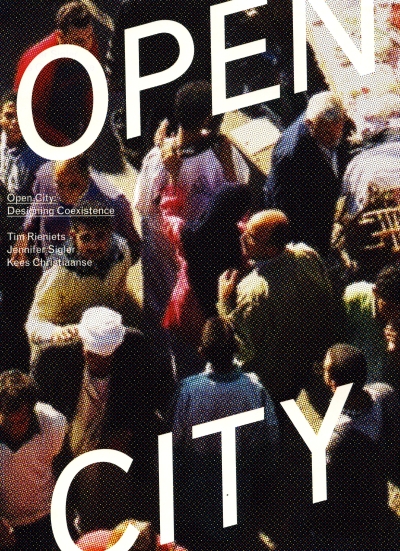
Open City. Designing Coexistence
Open City is the theme of the 4th International Architecture Biennial Rotterdam. ‘Open City: Designing Coexistence’ is the publication to accompany this international event, which will be held in Rotterdam from 24 September 2009 to 10 January 2010.
The book demonstrates the crucial role that architecture and urban design can play to enable access and facilitate coexistence—to stimulate conditions for an Open City.
Accessible city
Today, the Open City is a tenuous notion; as our cities grow and diversify, social and cultural groups struggle to coexist, and make conflicting demands on the city’s resources. For many, the opportunities the city promizes are scarce, or unattainable. How can our cities provide access for all in this millenium?
Part 1: Dimensions
The Open City does not have latitude or longitude, but it exists in our imagination. In Part 1, writers from different disciplines—sociology, ethnography, geography, law, history, economy, and urban design—map various theoretical dimensions of the Open City and consider the global forces that challenge it.
Part 2: Situations
The Open City is not a place, but a condition. It has no masterplan; each context requires a distinct approach. Part 2 of this book documents work by international architects, urban designers, and activists who were asked to initiate and implement projects for an Open City in urban situations that are currently in flux.
Author information
Contributors to part 1
Ash Amin, Marc Angelil, Regina Bittner, Stephen Cairns, Kees Christiaanse, Angelus Eisinger, Orhan Esen, Gerald Frug, Stephen Graham, Dieter Läpple, Mark Michaeli, Robert Neuwirth, Arnold Reijndorp, Tim Rieniets, Christian Salewski, Saskia Sassen, Peter Sloterdijk, Michael Zinganel.
Contributors to part 2
Crimson Architectural Historians, Interboro, Stephen Cairns, Daliana Suryawinata, Philipp Misselwitz, Can Altay, Jörg Stollmann, Rainer Hehl, Bart Goldhoorn, Alexander Sverdlov, and many others.

































































































